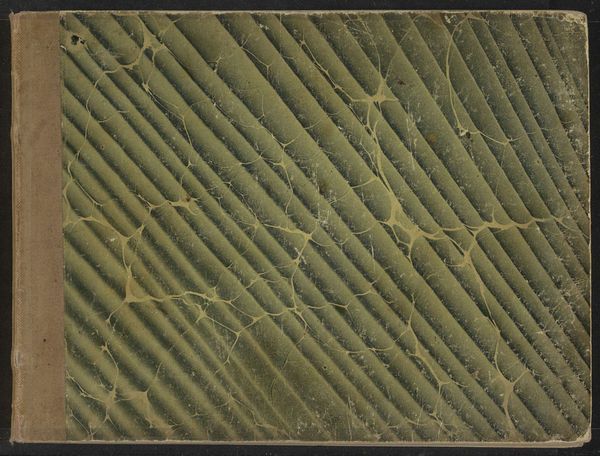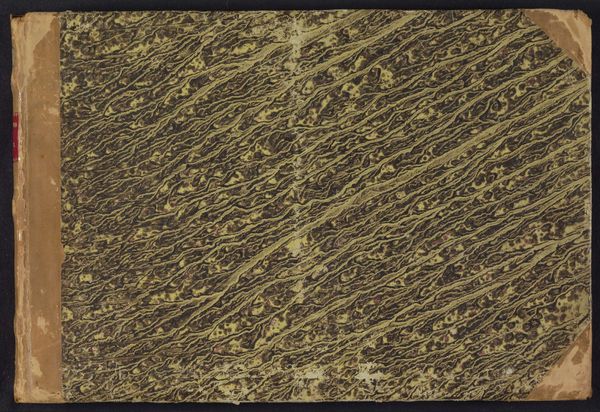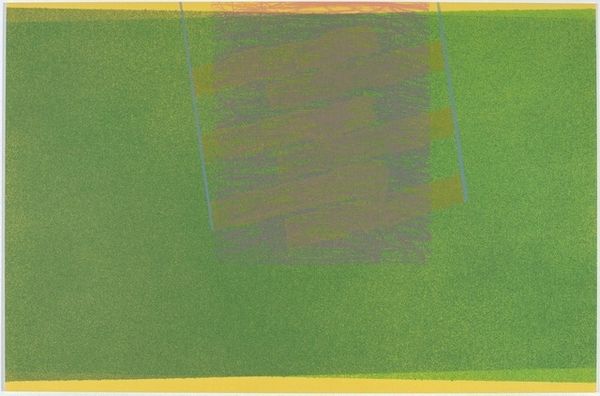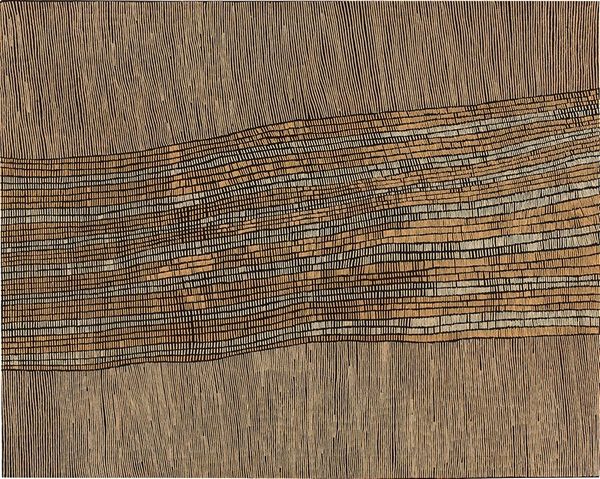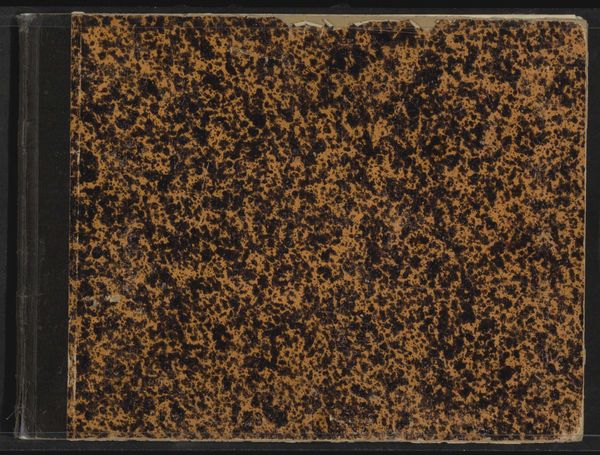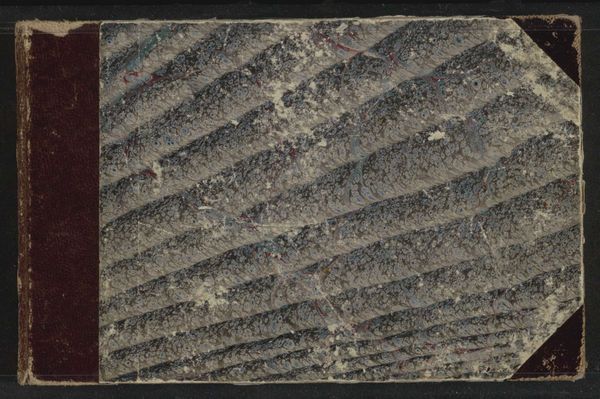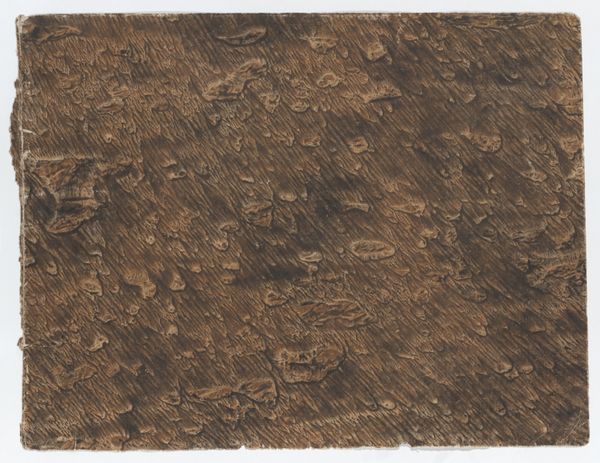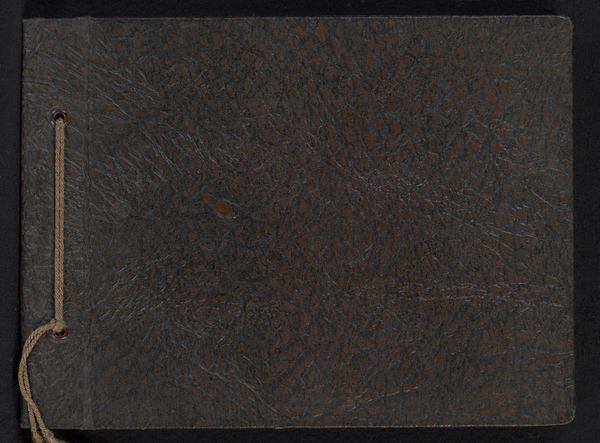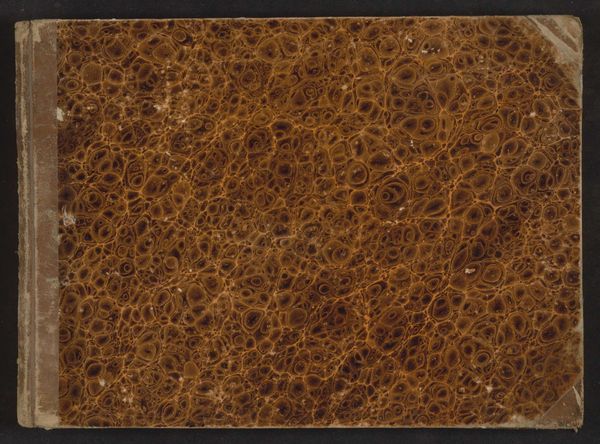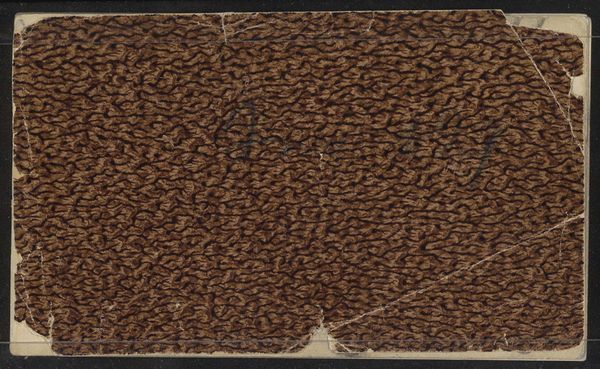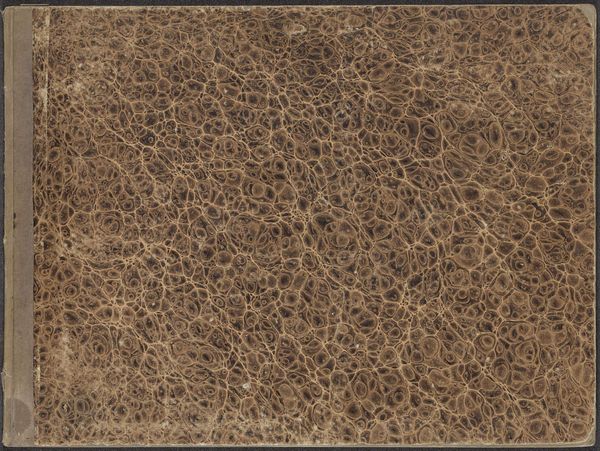
Le Cabinet des Beaux Arts ou Recueil d'Estampes, gravées d'apres les Tableaux d'un plafond ou les Beaux Arts sont representés / De Schatkamer der Vrye Konsten of Verzameling van verscheidene Printen, gegraveerd na eenige Zolderstukken, in welke deze Konsten vertoond worden 1693
0:00
0:00
drawing, print, paper
#
drawing
# print
#
paper
#
organic pattern
#
texture
Dimensions: height 229 mm, width 320 mm, thickness 12 mm, width 644 mm
Copyright: Rijks Museum: Open Domain
Editor: This intriguing cover, dated 1693, presents an artwork entitled 'Le Cabinet des Beaux Arts ou Recueil d'Estampes...' made with drawing, print and paper. Its swirled marble-like pattern and striated lines give the impression of layered materiality. What can you tell me about its artistic intention? Curator: I see in this an example of the fascinating intersection of bookbinding and artisanal production. The marbled paper wasn't just a decorative element; its creation was a skilled craft, often involving specialized workshops. The social context is vital – these techniques allowed for a kind of mass customization, mimicking luxury materials at a fraction of the cost. How does that idea sit with you, in terms of access and value? Editor: So, the value lies not only in the final aesthetic, but also the means by which it was achieved? I guess I had a very “arts and crafts” view on what the process entailed, but what I’m hearing you say is, "Think harder!" It wasn’t just one guy mixing paint, was it? Curator: Precisely. The labor involved, from the paper-making itself to the marbling process, speaks to a whole network of artisans and workshops contributing to the final product. Consider, too, how the 'organic' pattern is artificially made, isn't this an intentional contrast? Editor: It sounds almost industrial, even though the design looks naturally chaotic. This challenges my preconceived ideas around artisanal creations as distinctly unique objects. Now, when viewing this, it gives rise to more considerations surrounding material and creation that must always be a conscious choice. Curator: Exactly. Understanding art in terms of production processes exposes the relationship between aesthetic aspirations and economic realities. Editor: Thank you! This has really reshaped how I see early printed materials and consider the broader forces shaping these artisanal objects.
Comments
No comments
Be the first to comment and join the conversation on the ultimate creative platform.
